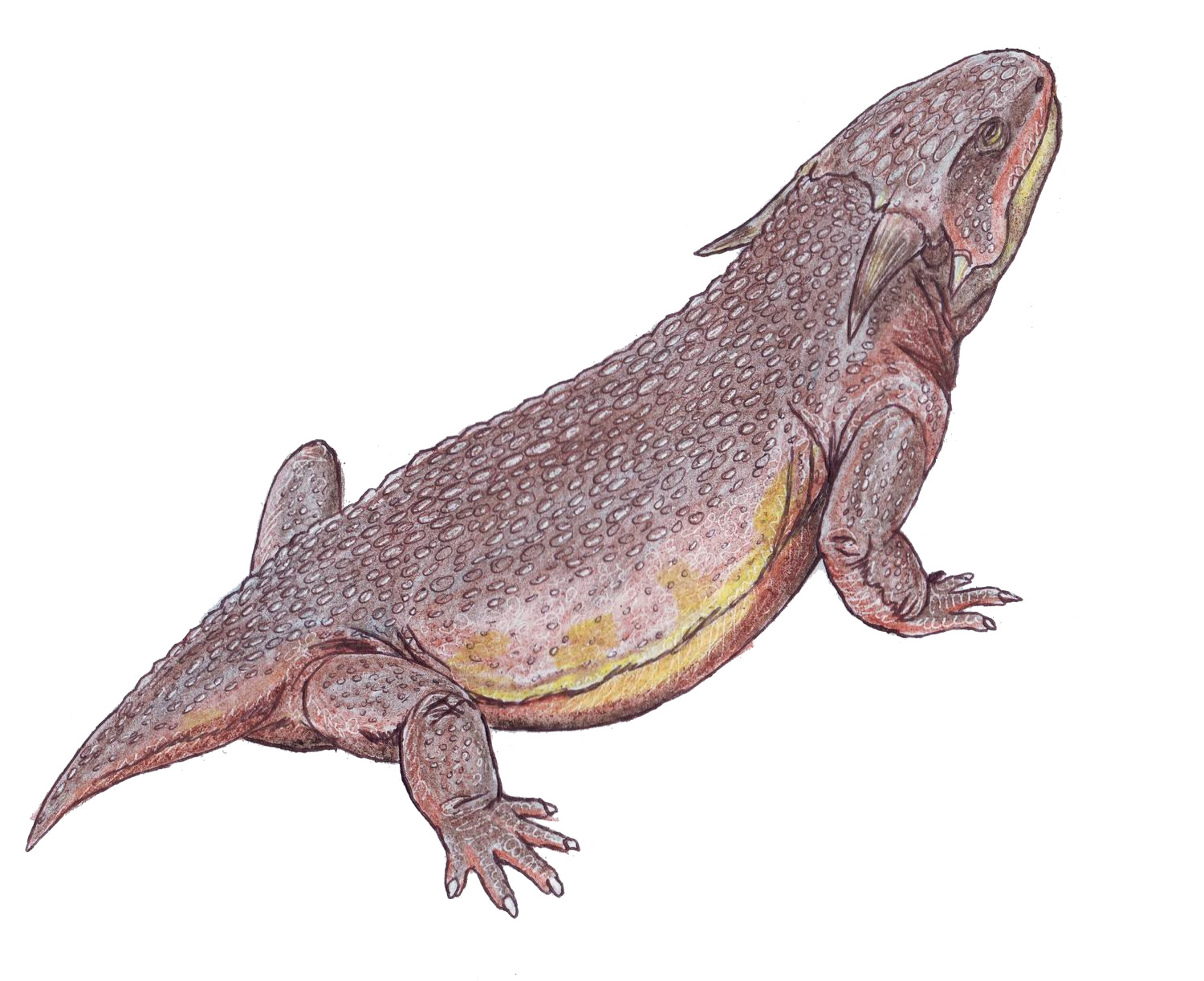Sclerosaurus on:
[Wikipedia]
[Google]
[Amazon]
 ''Sclerosaurus'' is an extinct
''Sclerosaurus'' is an extinct
 ''Sclerosaurus'' is an extinct
''Sclerosaurus'' is an extinct genus
Genus ( plural genera ) is a taxonomic rank used in the biological classification of living and fossil organisms as well as viruses. In the hierarchy of biological classification, genus comes above species and below family. In binomial nom ...
of procolophonid
Procolophonidae is an extinct family of small, lizard-like parareptiles known from the Late Permian to Late Triassic that were distributed across Pangaea, having been reported from Europe, North America, China, South Africa, South America, Antarc ...
parareptile
Parareptilia ("at the side of reptiles") is a subclass or clade of basal sauropsids (reptiles), typically considered the sister taxon to Eureptilia (the group that likely contains all living reptiles and birds). Parareptiles first arose near th ...
known from the Early to Middle Triassic
In the geologic timescale, the Middle Triassic is the second of three epochs of the Triassic period or the middle of three series in which the Triassic system is divided in chronostratigraphy. The Middle Triassic spans the time between Ma and ...
of Germany
Germany,, officially the Federal Republic of Germany, is a country in Central Europe. It is the second most populous country in Europe after Russia, and the most populous member state of the European Union. Germany is situated betwe ...
and Switzerland. It contains a single species, ''Sclerosaurus armatus''. It was fairly small about 30 cm long, distinguished from other known parareptiles by the possession of long, backwardly projecting spikes, rear lower jaw teeth with slightly imbricating crowns, and a narrow band of back armor comprising two or three rows of sculptured osteoderm
Osteoderms are bony deposits forming scales, plates, or other structures based in the dermis. Osteoderms are found in many groups of extant and extinct reptiles and amphibians, including lizards, crocodilians, frogs, temnospondyls (extinc ...
s on either side of the midline.
Traditional classifications, e.g. Carroll (1988) placed ''Sclerosaurus'' with the procolophonids, however some phylogenetic
In biology, phylogenetics (; from Greek φυλή/ φῦλον [] "tribe, clan, race", and wikt:γενετικός, γενετικός [] "origin, source, birth") is the study of the evolutionary history and relationships among or within groups o ...
studies have found it to be a close relative of the pareiasaurs, and together with that group it forms the clade Pareiasauroidea
Pareiasaurs (meaning "cheek lizards") are an extinct clade of large, herbivorous parareptiles. Members of the group were armoured with scutes which covered large areas of the body. They first appeared in southern Pangea during the Middle Permian ...
.Jalil, N. E., & Janvier, P. (2005). Les pareiasaures (Amniota, Parareptilia) du Permien supérieur du Bassin d’Argana, Maroc. Geodiversitas, 27(1), 35-132. More recent phylogenetic analyses place ''Sclerosaurus'' within Procolophonidae
Procolophonidae is an extinct family of small, lizard-like parareptiles known from the Late Permian to Late Triassic that were distributed across Pangaea, having been reported from Europe, North America, China, South Africa, South America, Anta ...
as originally suggested, and support its referral to the Leptopleuroninae
Leptopleuroninae is an extinct subfamily of procolophonid
Procolophonidae is an extinct family of small, lizard-like parareptiles known from the Late Permian to Late Triassic that were distributed across Pangaea, having been reported from Eu ...
. ''Sclerosaurus'' is most closely related to '' Scoloparia glyphanodon'' from Nova Scotia
Nova Scotia ( ; ; ) is one of the thirteen provinces and territories of Canada. It is one of the three Maritime provinces and one of the four Atlantic provinces. Nova Scotia is Latin for "New Scotland".
Most of the population are native Eng ...
, Canada
Canada is a country in North America. Its ten provinces and three territories extend from the Atlantic Ocean to the Pacific Ocean and northward into the Arctic Ocean, covering over , making it the world's second-largest country by tot ...
, and together they form the Sclerosaurini tribe within Leptopleuroninae.
References
Early Triassic reptiles of Europe Leptopleuronines Middle Triassic reptiles of Europe Taxa named by Christian Erich Hermann von Meyer Fossil taxa described in 1857 Prehistoric reptile genera {{paleo-reptile-stub